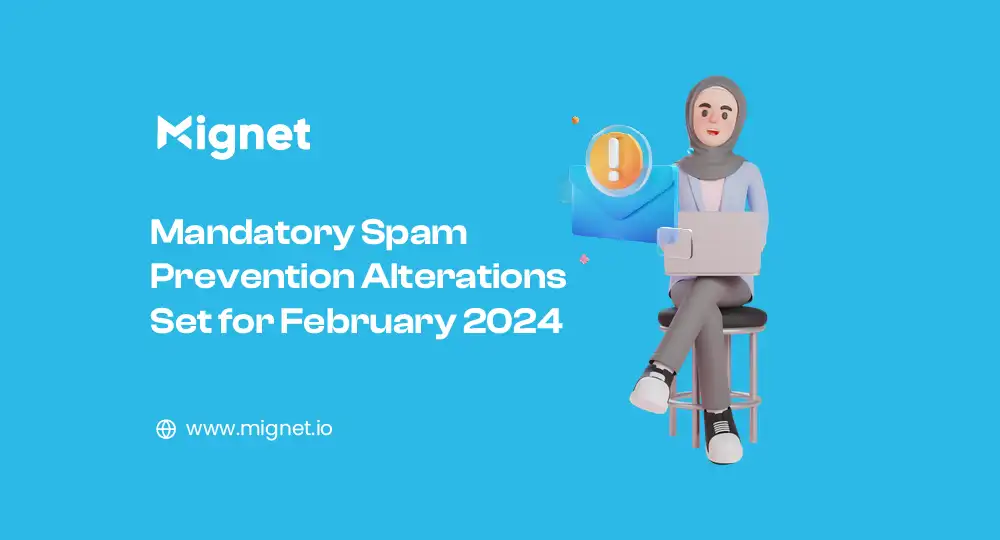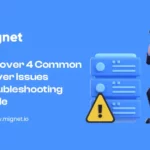
Crucial Updates: Mandatory Spam Prevention Alterations Set for February 2024
Table of Contents
In the ever-evolving landscape of cyberspace, where communication thrives, so does the persistent challenge of spam. As we delve into February 2024, a pivotal moment approaches – mandatory spam prevention alterations are on the horizon, poised to reshape the digital realm.
Spam, in its various forms, has plagued digital platforms for decades. From unsolicited emails clogging inboxes to deceptive advertisements infiltrating social media feeds, its presence undermines the user experience and poses significant cybersecurity risks. In response, technological advancements and proactive measures have been continuously employed to combat this pervasive nuisance.
The forthcoming changes, slated for February 2024, mark a concerted effort to bolster spam prevention measures across the digital ecosystem. These alterations, deemed mandatory, signal a collective determination to fortify online environments against spam proliferation.
Scheduled Mandatory Spam Prevention Changes for February 2024
At the forefront of these initiatives are enhanced filtering algorithms, designed to scrutinize incoming content with unprecedented precision. By leveraging advanced machine learning algorithms and natural language processing techniques, these filters can discern between genuine communication and spam with heightened accuracy.
Additionally, stringent verification protocols are set to be implemented, requiring stringent authentication measures for all outgoing communications. This multifaceted approach aims to thwart the efforts of malicious actors seeking to exploit vulnerabilities in the digital infrastructure.
Furthermore, collaboration between industry stakeholders is paramount in this endeavor. Cross-platform coordination and information sharing foster a united front against spam, facilitating swift identification and mitigation of emerging threats.
However, while these measures represent a significant stride forward in spam prevention, their efficacy hinges on widespread adoption and adherence. End-users play a pivotal role in this equation, exercising vigilance and discernment in their online interactions.
Educational initiatives, aimed at raising awareness about spam-related risks and best practices, are integral to cultivating a culture of digital literacy and resilience. By empowering users with knowledge and resources, we can collectively mitigate the impact of spam and safeguard the integrity of online communication channels.
As February 2024 draws near, anticipation mounts for the implementation of these crucial spam prevention alterations. While challenges undoubtedly lie ahead, the collective resolve to combat spam remains unwavering. Through collaboration, innovation, and user empowerment, we stand poised to usher in a new era of digital resilience, where spam’s grip is weakened, and online experiences are enriched.
Picture finding yourself at the airport ticket counter, only to realize you’ve left your ID behind. The sinking feeling sets in – without it, boarding the plane is impossible.
Now, transpose that scenario to your email inbox. The mere thought of vital emails missing their mark due to authentication issues is equally disheartening, isn’t it?
Come February 2024, major players like Google and Yahoo are rolling out significant revisions to their email authentication and spam prevention protocols.
These alterations aren’t merely tweaks; they represent substantial strides toward fortifying email security and reliability.
You might wonder, “But my emails are sailing smoothly. I’m not spamming anyone. Do I truly need to concern myself with this?”
Absolutely! And here’s why
Mandatory Spam Prevention Alterations Set for February 2024
- Steer Clear of Email Hiccups First and foremost, dodging email rejections is paramount.
The updated regulations mandate the adoption of email authentication standards such as SPF, DKIM, and DMARC. Think of these as your email’s identification – they ensure your legitimacy as the sender.
Failure to comply with these new standards heightens the risk of your emails landing in the dreaded spam folder or, worse still, not reaching their destination at all. Implementing authentication protocols guarantees that your emails are trusted and received.
- Fortified Email Security A primary objective of these revisions is to clamp down on phishing and spam activities. By integrating email authentication, you bolster not only your own email security but also that of every recipient.
DMARC serves as a shield, certifying the safety and integrity of your emails, reassuring others that they’re not falling victim to pesky phishing attempts or spam. Additionally, it thwarts cybercriminals from masquerading as you, safeguarding your reputation from fraudulent activities.
- Elevated User Experience Ultimately, these changes aim to elevate the user experience and streamline processes for individuals on your mailing list.
Ensuring ease of unsubscribing and maintaining a low spam rate (ideally under 0.1%) is essential. Simplifying these aspects contributes to a smoother, more enjoyable experience for your email recipients.
How to Dodge the Spam Label? So, how can you evade the dreaded fate of being labeled as spam?
Here are actionable steps every small business owner should take
Steps to Dodge the Spam Label
- Establish Your Email Authentication Protocols First things first, set up your email authentication protocols. As of February 1, 2024, SPF, DKIM, and DMARC become mandatory.
SPF validates your sending servers, DKIM scrutinizes your content for spam indicators, and DMARC aligns both to optimize email delivery. Once configured, your emails receive the green light.
If you’re unsure about the setup process, fret not – we offer a service to handle it all seamlessly. Just reach out to us for assistance.
- Educate Your Team Next, ensure your team is well-versed in these email protocols and their significance.
Training your staff on proper email communication practices guarantees that everyone handles emails securely and correctly.
We provide comprehensive staff training in IT and cybersecurity to ensure your team operates on the same secure wavelength.
- Monitor Your Email Activities Regularly Lastly, keep a close eye on your email habits. Monitor your outgoing emails and track your spam rate to steer clear of email rejections.
The last thing any small business owner wants is to be blacklisted. Regular monitoring to ensure email compliance keeps you in the good graces of the email giants like Google and Yahoo.
Avoid the Spam Trap with EasyDMARC and Mignet Technologies It may seem like a tall order, but by taking these simple steps before February 2024, you can ensure your emails remain safe and deliverable.
Stay informed, stay vigilant, and together, let us forge a safer and more secure digital future.
FAQ on Mandatory Spam Prevention Alterations
The mandatory spam prevention alterations in February 2024 entail significant updates to email authentication and spam prevention protocols. These changes aim to bolster email security and reduce the prevalence of spam and phishing attempts.
These alterations are being implemented to address the growing challenges of spam, phishing, and email security vulnerabilities. By enforcing stricter authentication measures, the goal is to enhance the trustworthiness and reliability of email communication.
Email users may experience improved protection against spam and phishing attempts, as well as increased confidence in the authenticity of received emails. However, they may need to ensure that their email systems and configurations are compliant with the new standards to avoid any disruption in email delivery.
The alterations involve the mandatory implementation of email authentication standards such as SPF (Sender Policy Framework), DKIM (DomainKeys Identified Mail), and DMARC (Domain-based Message Authentication, Reporting, and Conformance). These standards help verify the authenticity of email senders and prevent email spoofing and phishing attacks.
Yes, email senders should review their current email authentication setup and ensure that SPF, DKIM, and DMARC protocols are properly configured. This may require adjustments to DNS records and email server settings. It's also advisable to stay informed about any updates or guidelines provided by email service providers to ensure compliance with the new standards.
You can find more information about these alterations by referring to official announcements from email service providers, industry publications, or consulting with IT professionals specializing in email security. Additionally, online resources and documentation related to SPF, DKIM, and DMARC protocols can provide detailed guidance on implementation and best practices.
Unlock productivity: Join our Email List
Download Our Profile
Get to know more about Mignet Technologies by downloading our profile.



